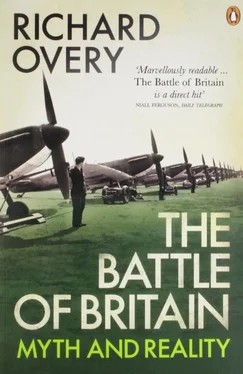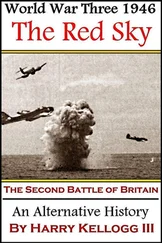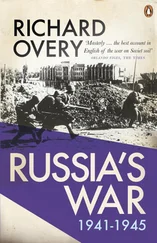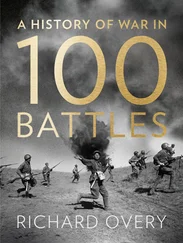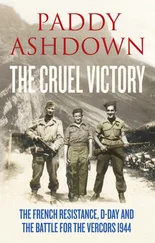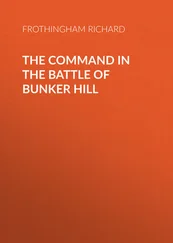Air Fleets 2 and 3 were led by two middle-aged Bavarians, the cream of the new generation of air force commanders appointed in 1935 when the German Air Force was refounded. Air Fleet 2 was led by Field Marshal Albert Kesselring, recently promoted for his contribution to the defeat of France. He is best remembered for his stubborn and occasionally brutal defence of northern Italy against Anglo-American armies later in the war, when he once again reverted to his original career as an army officer. Though lacking air experience, he proved an able organizer, with a genuine authority. His geniality made him a popular leader. Kesselring’s fellow commander in charge of Air Fleet 3 was Field Marshal Hugo Sperrle, who led the notorious German Condor Legion during the Spanish Civil War. He, too, was a career army officer, with limited flying experience from the First World War. Sperrle, like Kesselring, was energetic and popular, his corpulence a match for that of his plump commander-in-chief. Though neither had the long air force experience of Newall or Dowding, they brought with them all the qualities of organizational and operational understanding that set the German army apart in the early years of the war.
The task the two commanders faced in the summer of 1940 was one poorly anticipated in the 1930s. The German Air Force had to adjust in short measure from the role of close army support to a campaign of independent air operations against a well-armed air enemy. This change brought a host of practical problems. A whole network of air bases had to be established across northern France. Some existing French air stations could be used, but even these needed to be supplied with stocks of food, oil and spare parts to function effectively. The repair organization, vital for maintaining high levels of serviceability, was more difficult to improvise locally, and many damaged aircraft had to make their way by road and rail back to the Reich for repairs. In order to cope with the new conditions, German fighter forces were gathered into separate operational commands, rather on the lines of the British Group. However, they lacked two significant advantages enjoyed by the RAF: they had no way of tracking where the enemy was, and there was no way of controlling the whole fighter force from the ground once it was airborne. 28
The German Air Force also operated throughout the coming battle with low levels of reserves. This was largely a consequence of the poor performance of German aircraft production. Even though Hitler granted special priority in June to the air and naval armaments needed to subdue Britain, the supply of aircraft remained sluggish throughout 1940. Pre-war planning had anticipated a doubling of aircraft production in the first year of war to reach more than 20,000, but these targets were regularly scaled down during 1939 to match factory output. Plan 15, in September 1939, and Plan 16, drawn up only two months later, both reduced planned production in 1940 to little more than 11,000. A new plan was drafted in July 1940, but it offered even lower output for the second half of the year. Some effort was made to give fighter production greater priority, but during 1940 only 1,870 single-engined fighters were produced against a planned output of 2,412. 29This was less than half the British figure. During the summer and autumn of 1940, output of the Me 109 reached 164 in June, 220 in July, 173 in August and 218 in September, a grand total of 775 against the 1,900 fighters produced in Britain. 30
There were many causes for the deficiency but complacency was not one of them. Goering pressured and bullied the aircraft industry every bit as much as Beaver-brook. Nor were the resources lacking. The German aviation industry had access to the most advanced aeronautical technology in the world and enjoyed larger resources of machinery, raw materials and manpower than the British. The answer must be sought elsewhere. The leading culprit was the head of air force procurement, Colonel Ernst Udet. If ever there was a square peg in a round hole, it was Udet. A former First World War fighter ace, he became a well-known stuntman and film-star in the 1920s, and was a noted cartoonist. He gravitated to Goering’s social circle, and was chosen out of the blue to head the air force technical office in 1936, partly because of his popular reputation, partly because Goering wanted a subordinate who posed no threat to his authority. Udet was a ladies’ man and bon viveur, a daring test pilot and man of action, but he was also a political lightweight who found himself utterly out of his depth in a senior bureaucratic post in which long experience and wide technical knowledge were irreplaceable assets. He was manipulated and misled by the businessmen and officials who surrounded him. Later, in 1941, in desperation at his impossible position, he committed suicide, scrawling on the wall of his apartment before he died that Goering had betrayed him to ‘Jews’ in the Air Ministry. 31His place was taken too late by Field Marshal Erhard Milch, state secretary in the Air Ministry and a former director of Lufthansa, who had been sidelined by Goering in the late 1930s because he threatened to be too competent.
The German Air Force was still a formidable enemy in 1940. It was armed with some of the best combat aircraft then available. The high standard of production and the technical complexity of German aircraft provide at least part of the explanation why Udet found it so difficult to raise the production threshold quickly. In the Messerschmitt Me 109 (also known as the Bf (Bayerische Flugzeugwerke) 109) Germany possessed arguably the world’s best all-round fighter aircraft. The bulk of the force that fought in the battle bore the suffixes E-1 and E-3, variants with improved engine performance introduced during the course of 1939 and 1940. The Me 109E-1 had a top speed of 334 mph at 19,000 feet, and a ceiling of 34,000 feet. It was armed with two 20 mm cannon and two 7.9 mm machine-guns. The cannon provided a less rapid rate of fire than British fighter weapons, but the explosive shells were more effective. In the summer, armour was added to give the pilot enhanced protection. The Me 109E could be out-turned by both the Hurricane and the Spitfire (though whether this was due to the fact that British aircraft used higher-octane aviation fuel remains open to debate); at heights above 20,000 feet, however, the performance gap between the two sides widened considerably in the Messerschmitt’s favour. Because the German fighter’s DB 601 engine had a hydraulic supercharger, which allowed variation of speed with altitude, the Me 109 could fight much more robustly at high altitudes than it could at the lower levels flown by German bombers. If the Battle of Britain had been fought at 30,000 feet, the RAF would have lost it. 32
The other German aircraft used extensively in the battle were less effective. The second fighter employed was the Messerschmitt Me 110C/110D twin-engined heavy fighter. It could fly further than the Me 109, and had a comparable speed of 336 mph at 19,000 feet, but it proved much less manoeuvrable than the smaller fighters, and its range was much less than expected under combat conditions. The Me 110’s purpose was to lure enemy fighters into battle, allowing the bombers that followed them to fly on to their targets unmolested. In the event the Me 110 had itself to be protected by the Me 109 to prevent insupportable losses. When the Me 110 flew beyond single-seater fighter range, it proved a sitting duck. The British thought that the German Air Force flew a third fighter, the Heinkel He 113, but it proved to be a figment of the imagination. The only aircraft with this designation was a twin-seat dive-bomber developed in 1936, but the model was renumbered the He 118 by its designer because Heinkel feared pilot superstition. The aircraft remained jinxed none the less; when Udet test-flew it himself in June 1936, it broke up in mid-air and he narrowly escaped with his life. The He 118 never saw service. Its mistaken identification in the battle has been attributed to German misinformation.
Читать дальше
